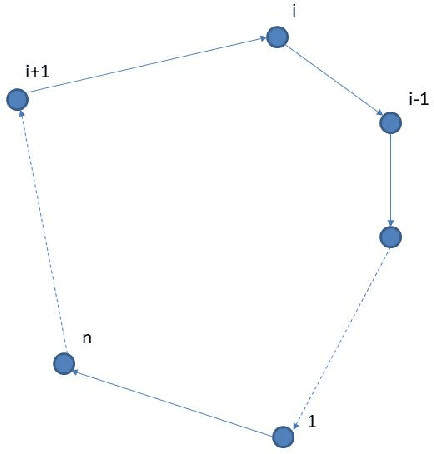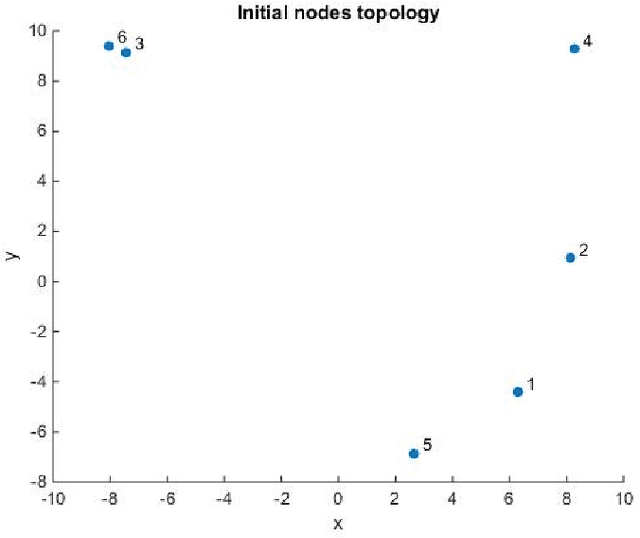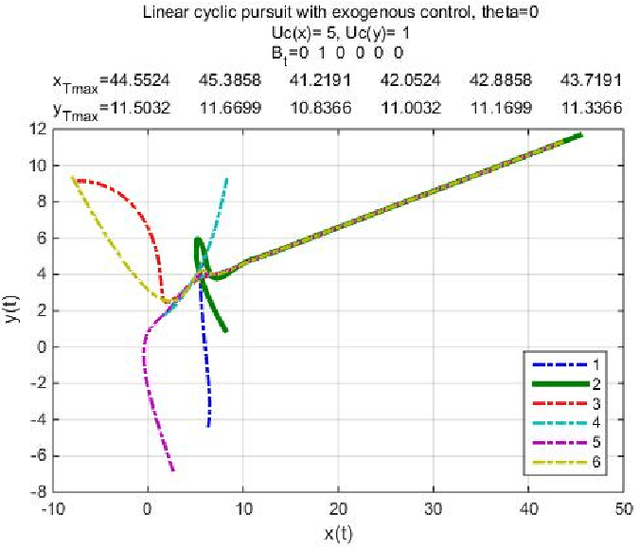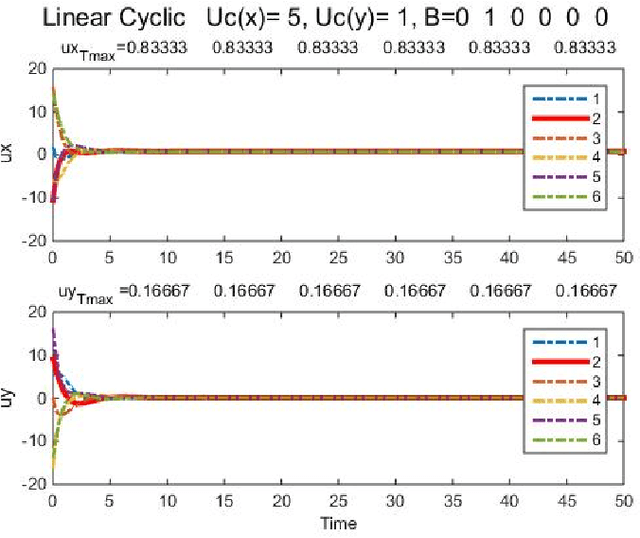Guidance of Agents in Cyclic Pursuit
Paper and Code
Jul 02, 2020



This report studies the emergent behavior of systems of agents performing cyclic pursuit controlled by an external broadcast signal detected by a random set of the agents. Two types of cyclic pursuit are analyzed: 1)linear cyclic pursuit, where each agent senses the relative position of its target or leading agent 2)non-linear cyclic pursuit, where the agents can sense only bearing to their leading agent and colliding agents merge and continue on the path of the pursued agent (a so-called "bugs" model). Cyclic pursuit is, in both cases, a gathering algorithm, which has been previously analyzed. The novelty of our work is the derivation of emergent behaviours, in both linear and non-linear cyclic pursuit, in the presence of an exogenous broadcast control detected by a random subset of agents. We show that the emergent behavior of the swarm depends on the type of cyclic pursuit. In the linear case, the agents asymptotically align in the desired direction and move with a common speed which is a proportional to the ratio of the number of agents detecting the broadcast control to the total number of agents in the swarm, for any magnitude of input (velocity) signal. In the non-linear case, the agents gather and move with a shared velocity, which equals the input velocity signal, independently of the number of agents detecting the broadcast signal.
 Add to Chrome
Add to Chrome Add to Firefox
Add to Firefox Add to Edge
Add to Edge